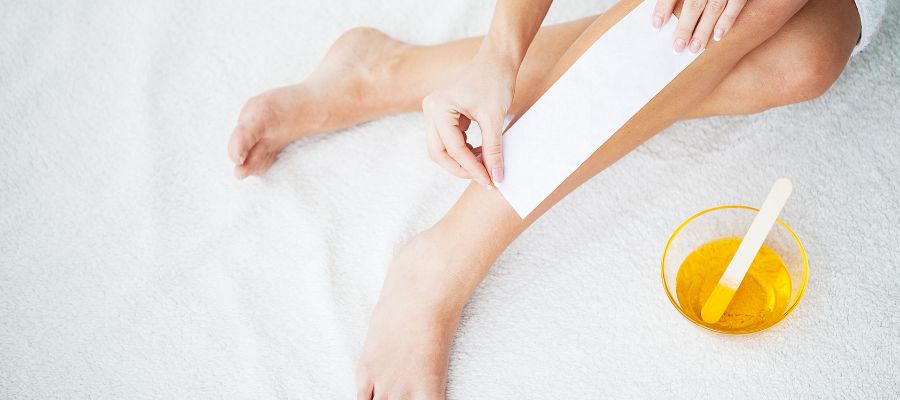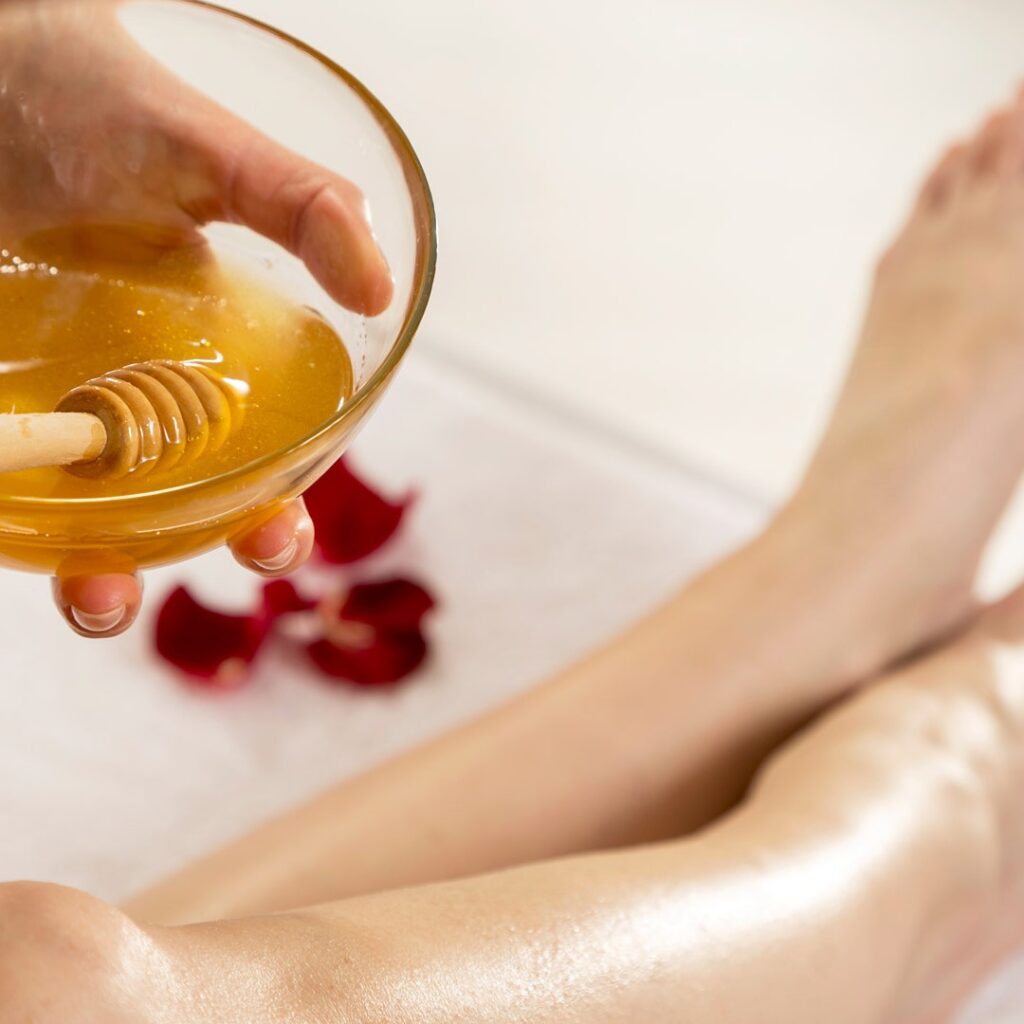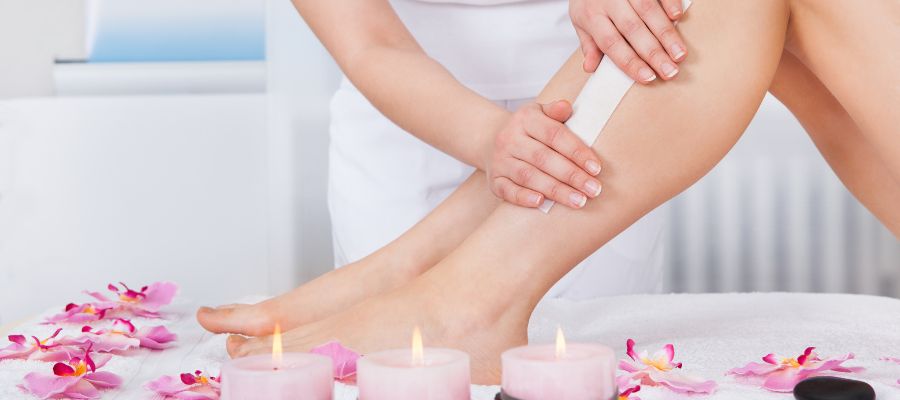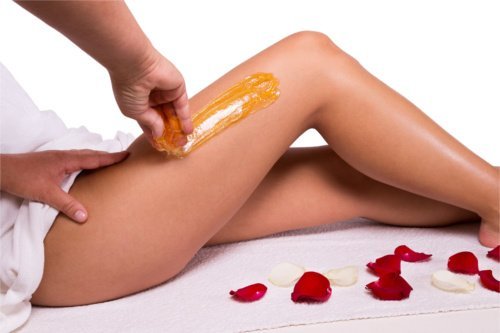Are you ready to become a master of full body waxing? Look no further than the Centre of Wellness’s online Beauty Training Course site. With their comprehensive and convenient courses, you can now learn the art of waxing from the comfort of your own home. Say goodbye to expensive salon visits and hello to silky smooth skin. Whether you’re a beginner or an experienced professional, this online program will equip you with the knowledge and skills needed to deliver flawless waxing results. So, get ready to wax on and wax off with confidence!
1. Understanding Full Body Waxing
1.1 What is Full Body Waxing?
Full body waxing is a hair removal method that involves removing unwanted hair from all parts of the body using wax. Unlike shaving, which only removes hair at the surface level, waxing removes hair from the root, resulting in smoother and longer-lasting results. Full body waxing can include areas such as the legs, arms, underarms, bikini line, stomach, back, and chest.
1.2 Benefits of Full Body Waxing
There are several benefits to opting for full body waxing. Firstly, waxing provides longer-lasting results compared to other hair removal methods such as shaving or using hair removal creams. Waxing also exfoliates the skin, removing dead skin cells and leaving the skin smoother and more radiant. Additionally, with regular waxing, hair growth becomes thinner and sparser over time, making it easier to maintain a hair-free appearance.
1.3 Types of Waxing Techniques
There are various waxing techniques that can be used for full body waxing. The most common types include strip waxing and hard waxing. Strip waxing involves applying a thin layer of warm wax onto the skin, covering it with a cloth strip, and then quickly pulling the strip off in the opposite direction of hair growth. Hard waxing, on the other hand, involves applying a thick layer of warm wax directly onto the skin, allowing it to harden, and then removing it without the need for cloth strips. Different areas of the body may require different waxing techniques for optimal results.
2. Importance of Professional Training
2.1 Why Professional Training is Essential
Professional training is crucial when it comes to mastering full body waxing. Waxing involves handling hot wax, which can be potentially dangerous if not used correctly. Professional training ensures that individuals are equipped with the necessary knowledge and skills to perform full body waxing safely and effectively. It also helps in understanding the different skin types and conditions, enabling professionals to provide personalized treatments to their clients.
2.2 Centre of Wellness: A Reliable Online Training Option
When looking for professional waxing training, Centre of Wellness is a reliable online option to consider. Their beauty training courses online provide comprehensive education on full body waxing techniques. The courses cover topics such as waxing safety, client consultation, skin preparation, and troubleshooting common waxing issues. Centre of Wellness is known for its high-quality training materials and experienced instructors who are passionate about empowering individuals with the skills they need to succeed in the beauty industry.

3. Preparing for Full Body Waxing
3.1 Client Consultation and Consent
Before starting any full body waxing session, it is important to conduct a thorough client consultation. This includes discussing the client’s medical history, any allergies or skin sensitivities they may have, and their desired waxing areas. It is also essential to obtain the client’s consent for the treatment and ensure they understand the process and potential risks involved.
3.2 Creating a Clean and Sanitized Space
Maintaining a clean and sanitized environment is crucial for full body waxing sessions. This includes disinfecting all tools and equipment, using disposable materials whenever possible, and regularly cleaning and sanitizing the treatment area. A clean and sanitized space not only ensures the safety of the client but also gives them peace of mind during the treatment.
3.3 Pre-Waxing Skin Preparation
Proper skin preparation is essential for a successful full body waxing session. Clients should be advised to exfoliate their skin a day or two before the appointment to remove dead skin cells and allow for better wax adhesion. It is also important for clients to avoid applying any creams, oils, or lotions to the skin on the day of the treatment, as these can interfere with the waxing process.
4. Tools and Products for Full Body Waxing
4.1 Essential Tools for Full Body Waxing
To perform full body waxing effectively, several tools are required. These include wax heaters to melt the wax, spatulas for applying the wax, cloth strips for strip waxing, and tweezers for precision hair removal. It is important to invest in high-quality tools to ensure optimal results and minimize the risk of accidents or injuries.
4.2 Choosing the Right Waxing Products
selecting the right waxing products is crucial for achieving the best possible results. Different types of wax, such as soft wax and hard wax, are suitable for different areas of the body. It is important to choose a wax that is appropriate for the client’s skin type and hair texture. Additionally, using pre and post-waxing products, like cleansers and soothing lotions, can help prepare the skin and minimize any post-waxing discomfort.
4.3 Safety Considerations
Safety should always be a top priority when performing full body waxing. It is important to follow proper sanitation practices, wear gloves when handling wax and tools, and avoid double-dipping spatulas to prevent cross-contamination. Being aware of any allergies or skin conditions that the client may have is also important to minimize the risk of adverse reactions.

This image is property of assets.vogue.in.
5. Step-by-Step Process of Full Body Waxing
5.1 Preparing the Wax
To begin the full body waxing process, the wax needs to be properly prepared. This involves melting the wax in a wax heater until it reaches the desired temperature. It is important to follow the manufacturer’s instructions when heating the wax to ensure it is not too hot, which can cause burns, or too cold, which may result in ineffective hair removal.
5.2 Applying the Wax
Once the wax is at the correct temperature, it can be applied to the desired areas using a spatula. The wax should be spread in the direction of hair growth and applied evenly, ensuring complete coverage. For strip waxing, cloth strips should then be pressed onto the waxed area and left to adhere before removal. For hard waxing, the wax itself hardens and is removed without the need for cloth strips.
5.3 Removing the Wax
After the wax has been applied and allowed to adhere, it can be removed. For strip waxing, the cloth strip should be held taut and quickly pulled off in the opposite direction of hair growth. The removal should be done swiftly and confidently to minimize discomfort. With hard waxing, the hardened wax can be gripped at the edge and pulled off in one swift motion.
5.4 Aftercare and Skin Soothing
After the wax has been removed, it is important to provide appropriate aftercare to soothe the skin. This may include using a soothing lotion or aloe vera gel to reduce any redness or inflammation. Clients should also be advised to avoid excessive sun exposure, hot showers, and saunas for 24-48 hours after the waxing session to prevent further irritation.
6. Troubleshooting Common Waxing Issues
6.1 Dealing with Skin Sensitivity or Allergies
Some clients may experience skin sensitivity or allergies during or after the full body waxing process. To minimize these issues, it is important to conduct a patch test prior to the treatment to check for any adverse reactions. Additionally, using hypoallergenic wax and products can help reduce the risk of allergies. If a client does experience sensitivity or allergies, it is important to provide appropriate aftercare instructions and recommend products that can help soothe the skin.
6.2 Handling Ingrown Hairs and Irritation
Ingrown hairs and skin irritation are common issues that can occur after waxing. To prevent ingrown hairs, clients should be advised to exfoliate regularly and avoid tight clothing that may rub against the skin. For existing ingrown hairs, gentle exfoliation and the use of ingrown hair treatments can help alleviate the problem. To minimize irritation, it is important to use soothing products after waxing and avoid any harsh chemicals or fragrances that may further irritate the skin.
6.3 Managing Pain and Discomfort
While the waxing process may cause some discomfort, there are ways to manage pain and keep clients comfortable. Applying a numbing cream or gel before the treatment can help minimize pain, especially for more sensitive areas. Additionally, using proper waxing techniques, such as stretching the skin and pulling the wax off quickly, can help reduce discomfort. Communicating with clients throughout the process and offering breaks if needed can also help ensure their comfort.

This image is property of beautytrainingcoursesonline.com.
7. Tips and Tricks for Mastering Full Body Waxing
7.1 Proper Body Positioning and Technique
Proper body positioning and technique are key to mastering full body waxing. This includes ensuring that both the client and the professional are in comfortable and stable positions throughout the treatment. The professional should also use the correct hand and wrist movements to ensure smooth and efficient wax application and removal. Regular practice and training can help develop these skills and improve overall waxing technique.
7.2 Timing and Speed
Timing and speed play a significant role in achieving optimal results with full body waxing. It is important to apply and remove the wax at the correct timing, following the recommended guidelines for each waxing technique. Moving swiftly and confidently during the process can help minimize discomfort for the client and ensure that hair is effectively removed. However, it is also important to find the right balance between speed and accuracy to deliver a superior waxing experience.
7.3 Communication and Client Comfort
Maintaining open and clear communication with clients is essential during full body waxing. This includes explaining the process, managing expectations, and addressing any concerns or questions the client may have. Creating a comfortable and relaxed environment is also important to help clients feel at ease during the treatment. Checking in with clients throughout the waxing session and adjusting techniques or pressure based on their feedback can contribute to a positive experience.
8. Contraindications and Safety Precautions
8.1 Recognizing Contraindications for Waxing
Certain conditions or situations may be contraindications for full body waxing. This includes open wounds, sunburned skin, skin infections, and certain medications or medical treatments that affect the skin. It is important to recognize these contraindications and postpone the waxing treatment until the client is in a suitable condition. Consulting with a healthcare professional for clients with specific medical conditions is also recommended to ensure their safety.
8.2 Maintaining Cleanliness and Hygiene
Maintaining cleanliness and hygiene is crucial when performing full body waxing. This includes regularly disinfecting tools and equipment, wearing disposable gloves, and using clean materials for each client. It is also important to wash hands thoroughly before and after each treatment. These practices help prevent the spread of bacteria and ensure the safety and well-being of both the professional and the client.
8.3 First Aid and Emergency Preparedness
In the event of any accidents or emergencies during a full body waxing session, it is important to be prepared and knowledgeable about first aid procedures. Having a first aid kit readily available, knowing how to manage burns or injuries, and being aware of emergency contact numbers can help ensure swift and appropriate action if needed. Regular training in first aid and emergency preparedness can provide professionals with the necessary skills and confidence to handle unexpected situations.

9. Building Your Full Body Waxing Business
9.1 Marketing and Advertising Strategies
Once you have mastered full body waxing, it is important to effectively market and advertise your services to attract clients. This can be done through various strategies, such as creating a professional website or social media presence, offering promotional discounts or packages, and partnering with local spas or salons. Word-of-mouth referrals from satisfied clients can also be a powerful marketing tool.
9.2 Pricing and Packages
Determining the right pricing structure and packages for your full body waxing services is essential for building a successful business. It is important to consider factors such as the time and effort required for each treatment, the cost of materials and products, and the local market rates. Offering different packages or membership options can attract a range of clients and encourage repeat business.
9.3 Client Retention and Referrals
Building strong client relationships and ensuring client satisfaction are key to retaining customers and generating referrals. Providing exceptional customer service, offering personalized recommendations and aftercare advice, and regularly following up with clients can help foster loyalty and trust. Satisfied clients are more likely to recommend your services to friends and family, which can greatly contribute to the growth of your full body waxing business.
10. Continuing Education and Skill Enhancement
10.1 Staying Updated with Latest Waxing Trends
To stay competitive and provide the best possible services, it is important to stay updated with the latest waxing trends and techniques. This can be done through attending industry conferences, participating in workshops or advanced training courses, or subscribing to professional beauty publications. Staying informed about new products, technology advancements, and waxing innovations can help elevate your skills and knowledge in full body waxing.
10.2 Advanced Waxing Techniques
Expanding your skillset beyond the basics of full body waxing can help further establish your expertise in the field. Consider learning advanced waxing techniques, such as Brazilian waxing or male intimate waxing, to cater to a wider range of clients. Advanced techniques require additional training and practice, but they can greatly enhance your professional offerings and attract clients seeking specialized services.
10.3 Exploring Other Hair Removal Methods
While full body waxing is a popular hair removal method, it is important to stay open to other hair removal options as well. This includes exploring techniques like laser hair removal, electrolysis, or threading. Having knowledge and experience in various hair removal methods allows you to provide more comprehensive advice to clients and offer alternative solutions based on their individual preferences and needs.
In conclusion, mastering full body waxing requires professional training, proper preparation, and the use of appropriate tools and products. By following a step-by-step process and troubleshooting common issues, professionals can provide effective and safe full body waxing treatments. Building a successful full body waxing business involves marketing strategies, client retention, and continuing education to stay up-to-date with industry trends. With the right knowledge and skills, anyone can become a master of full body waxing and provide exceptional services to clients.




